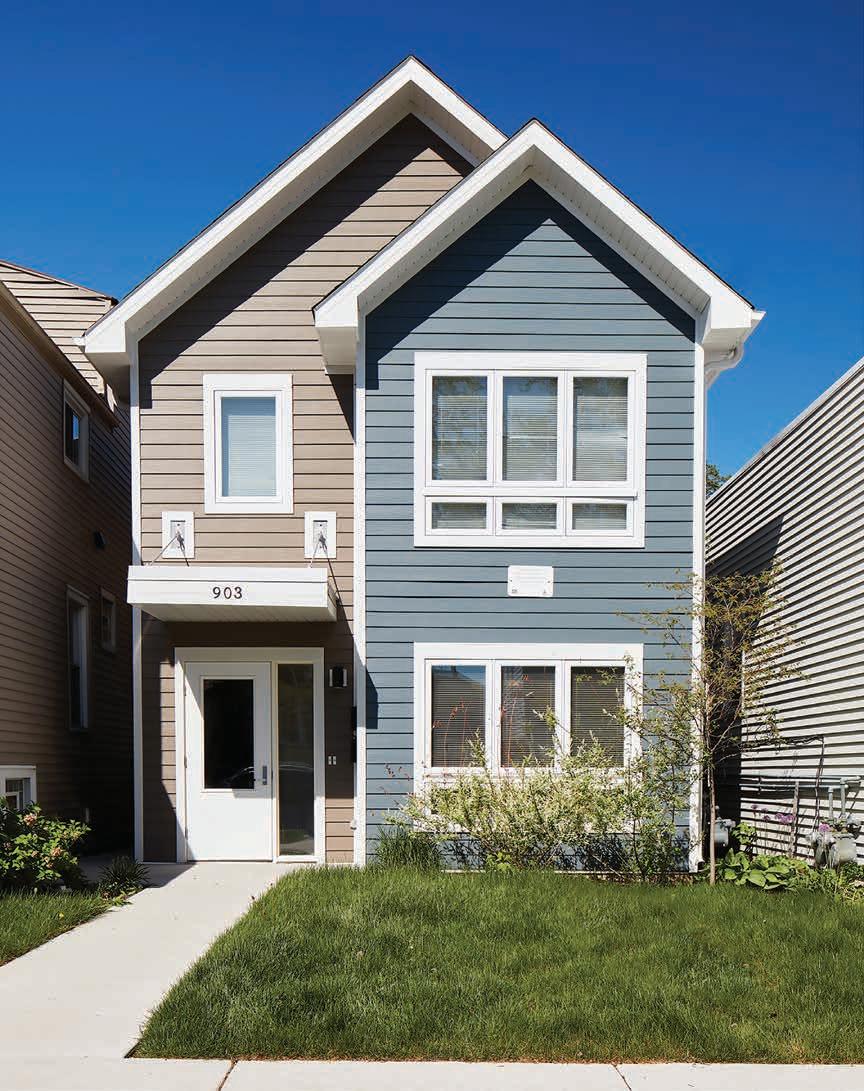
3 minute read
Forward Thinking
Fueling accessible building through policy initiatives
BY LOUIS TENENBAUM
Advertisement
This new magazine’s focus on accessibility in the built environment is an outgrowth of the medical miracles that have significantly increased longevity and enabled a more physically varied population. If homes are tools for living, these demographic changes create an opportunity for those in the building business to update the residential infrastructure to meet these changes. Accessible Living provides the perfect forum to share expertise, techniques and products that meet the needs of these demographic changes.
While the market for greater accessibility may grow organically, the most immediate, direct and effective market growth comes from policy. When stepping back and looking at the building business, policy — from rules and regulations to incentives and government spending — lies behind everything.
It is at the heart of zoning, mortgage funding and building codes. Policy decisions are behind new freeway entrances and public transit stops that change land values, wastewater treatment systems that make neighborhoods healthy and possible, along with building heights, building restriction lines, unit density and parking requirements that impact what, where and how many units are built.
Tax packages contribute to retail, industrial and even sports arena development. Policy is a major factor in shaping the built environment. A good example of tax policy spurring market growth is demonstrated by the rapid acceleration in the number of solar installations. The Solar Energies Industries Association reports: “The Solar Investment Tax Credit (ITC) is one of the most important federal policy mechanisms to support the growth of solar energy in the United States. Since the ITC was enacted in 2006, the U.S. solar industry has grown by more than 10,000% — creating hundreds of thousands of jobs and investing billions of dollars in the U.S. economy in the process.”1
Providing value beyond current use
The HomesRenewed Coalition, or HRC, started from a simple question, “How can we get policies that incentivize accessible building?” After
CRITIQUES & RATIONALE
Anticipating some frequently voiced critiques, the coalition outlines below the rationale behind the HRC proposal and notes how the mission may be expanded in the future: all, this industry, much like clean energy, is a reaction to changing circumstances in the way we live and the tools we use. Much like a solar installation, we offer the chance for private capital to be invested in individual or multifamily housing stock. Like solar, this is a capital improvement that continues to provide societal value beyond the timespan of use by the current purchaser or resident.
C: It pulls money from limited retirement accounts.
R: The bill will contain lifetime caps on the deduction for both age categories. (2) This money is saved for retirement. This is a cost-effective use of that money.
C: It does not provide for those with limited resources.
R: This is a start, a foot in the door, so to speak. Once the value becomes apparent, other policies will be enacted. After all, seat belts and backup cameras were originally expensive options in luxury cars and are now requirements.
C: It is difficult to monitor tax policy and may lead to fraud and abuse.
R: This is always a risk, but HRC is confident that industry leaders can work with government regulators to craft rules that work.
HRC has been driving proposed federal legislation to provide a tax incentive for home modifications that increase accessibility in private residences. The bill, The Home Modifications for Accessibility Act (HR 7676), was introduced May 6 into the House Ways and Means Committee by U.S. Reps. Charlie Crist, D-Fla., Tom Suozzi, D-N.Y. and Dan Mueser, R-Pa.
The bi-partisan bill will allow a $30,000 tax deduction for specified home modifications for homeowners. In addition, homeowners under the age of 59.5 will be able to utilize retirement funds without penalty and receive the tax break. It is important to weigh the costs of a tax incentive against the benefits. HRC has published an economics white paper showing that lost tax revenues will be balanced by the healthcare savings to Medicare from reduced falls. Additional benefits, at no net cost to the government, include:
> Long-term well-being, increased choice, dignity and joy of residents
> Increase in jobs and job training for accessibility installations
> Reduction in need for extended rehab away from home
> Reduction in family, informal and paid caregiver injuries
> Fewer hours of caregiver time needed
With these incentives in place, the conversation on a building project will shift from avoiding falls, dependence, frailty and misery to saving money. As more building professionals become familiar with accessibility, these techniques will become the norm for both new construction and remodeling.

Both this new magazine and HR 7676 signal that safety and accessibility are recognized as accepted business, healthcare and national priorities.
Policy is an important tool for the industry to grow so we can enhance the lives of the millions of Americans enjoying the benefits of medical science, but who desperately need updated homes to do so with choice, dignity and joy.
1 https://seia.org/initiatives/solar-investment-taxcredit-itc









